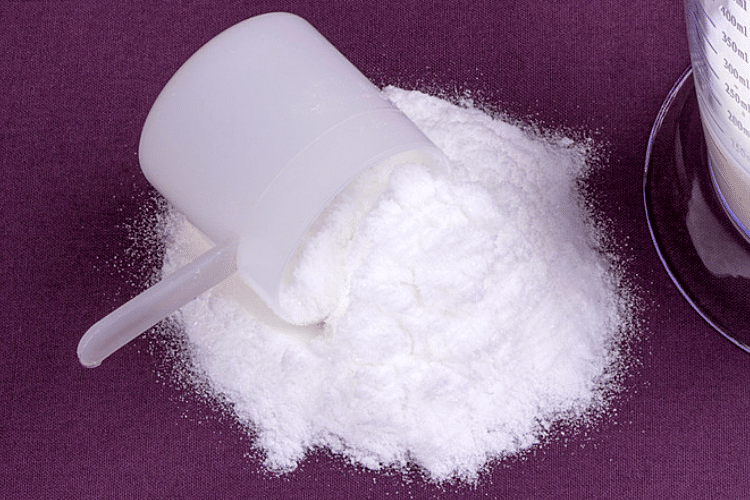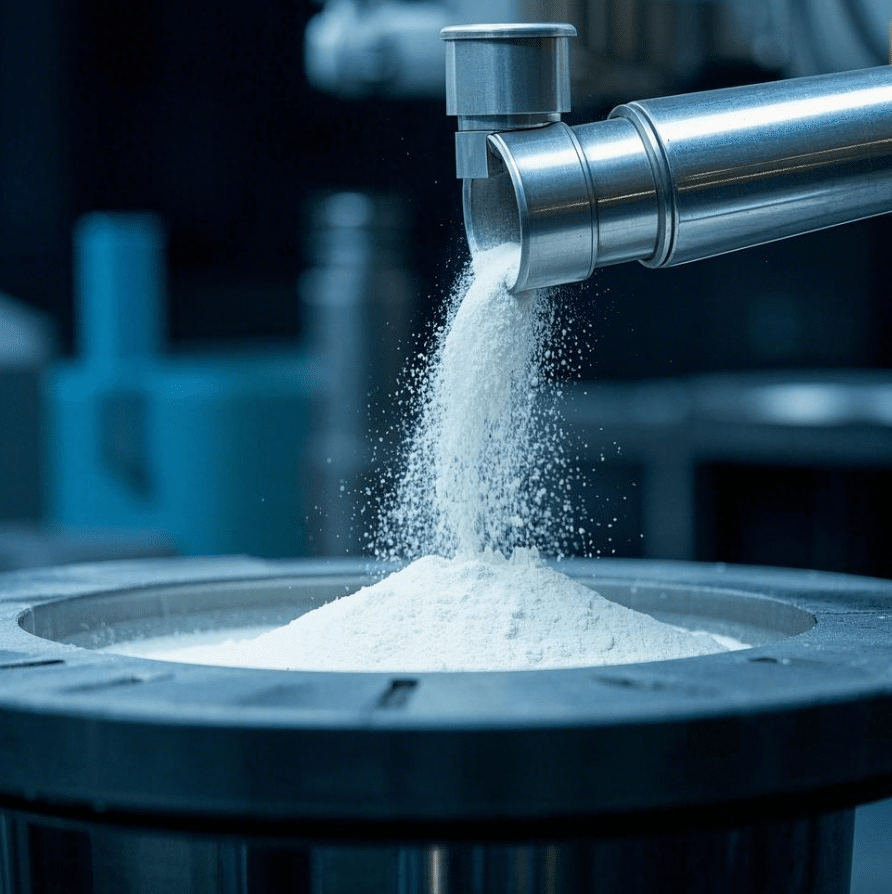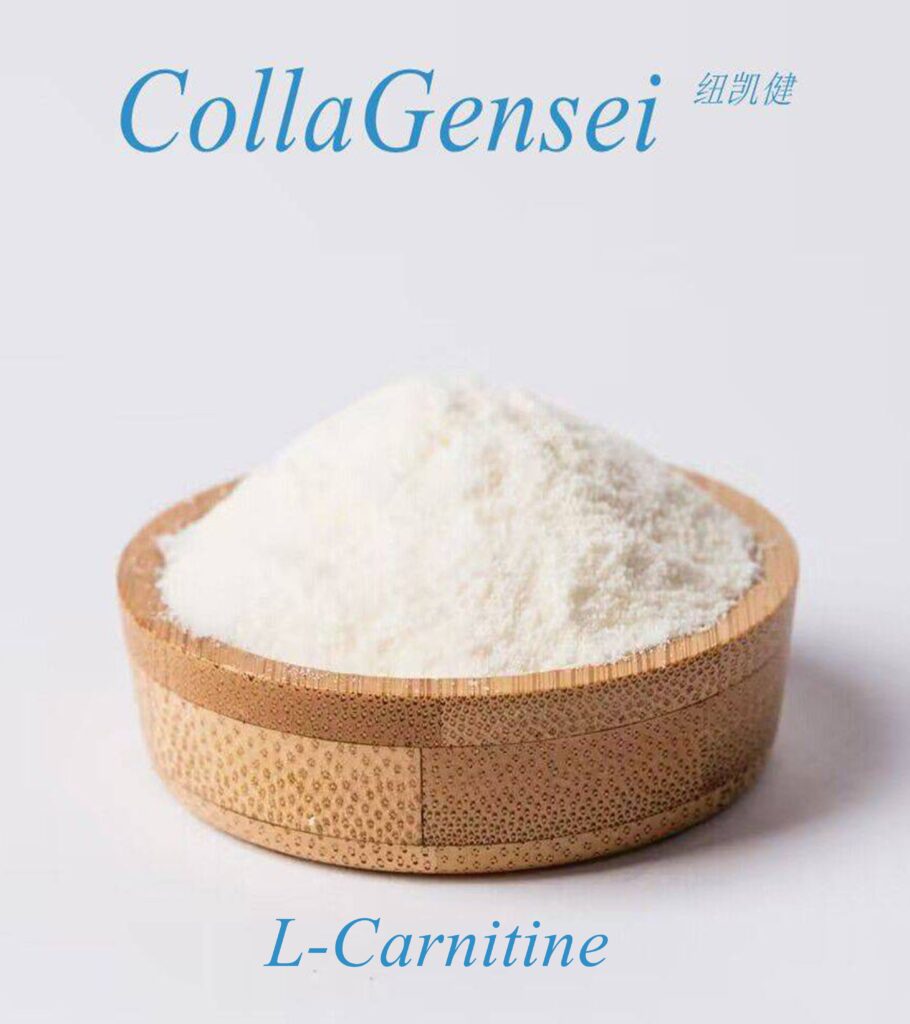Glycine and Magnesium: The Dynamic Duo Transforming Health Product Formulations
What is Glycine and Magnesium? Have you ever wondered why so many successful supplement formulations contain both glycine and magnesium? As a product development specialist who’s spent over 15 years helping brands create winning formulas, I’ve seen firsthand how these two powerhouse ingredients can make or break a product line. Today, I’m pulling back the curtain on everything B2B buyers need to know about these versatile raw materials.
The supplement industry is booming—global sales exceeded $150 billion last year—and ingredients that deliver genuine benefits are driving much of this growth. Glycine and magnesium stand out as particularly valuable components in this competitive landscape, but understanding their unique attributes and how they complement each other is essential for smart sourcing decisions.
Fundamental Building Blocks: Basic Information
Glycine: The Versatile Amino
Basic Profile:
- Chemical name: Aminoacetic acid
- Common aliases: Aminoacetic acid, G, Gly
- CAS Number: 56-40-6
- Production standards: USP, EP, FCC, AJI
- Physical appearance: White crystalline powder
- Taste profile: Mildly sweet (approx. 1/3 as sweet as sucrose)
- Solubility: Highly water-soluble (25g/100mL at 25°C)
- Common specifications:
- Food grade glycine: 98.5-101.5% purity
- Industrial grade glycine: 95-98% purity
- Pharmaceutical grade: 99.5%+ purity
- Common mesh size: 80-100 mesh
- US import tariff: 6.5%
- EU import tariff: 6.5%
- HS Code: 2922.49.4020
- Shelf life: 3-5 years when properly stored
- Storage conditions: Store in cool, dry place away from direct sunlight
- Standard packaging: 25kg paper bags with polyethylene liner
Magnesium: The Essential Mineral
Basic Profile:
- Chemical name: Magnesium (various salt forms)
- Common forms: Magnesium oxide, citrate, glycinate, malate, etc.
- CAS Number: 7439-95-4 (elemental), varies by salt form
- Production standards: USP, EP, FCC
- Physical appearance: White to off-white powder (varies by form)
- Taste profile: Varies by form (oxide: largely tasteless; citrate: slightly sour)
- Solubility: Varies dramatically by form
- Oxide: Poorly water-soluble (0.086g/100mL)
- Citrate: Moderately soluble (20g/100mL)
- Chloride: Highly soluble (54.3g/100mL)
- Common specifications:
- Food grade: 98-99% purity
- Pharmaceutical grade: 99%+ purity
- Common mesh size: 80-200 mesh (form dependent)
- US import tariff: 0-4.2% (form dependent)
- EU import tariff: 3.2-5.5% (form dependent)
- HS Code: Varies by form
- Shelf life: 2-3 years (form dependent)
- Storage conditions: Cool, dry place, sealed container
- Standard packaging: 25kg drums or bags with moisture barrier
Historical Context: Discovery and Development
Glycine’s Journey
Glycine was first isolated in 1820 by Henri Braconnot, a French chemist who extracted it from gelatin through acid hydrolysis. Its name derives from the Greek word “glykys” meaning “sweet” due to its mild sweet taste. Initially, glycine powder production was limited to research purposes, but by the early 20th century, industrial production methods were developed.
The significance of glycine in human nutrition and biochemistry became clearer through research in the 1950s and 1960s, particularly through the work of Dr. William Rose at the University of Illinois, who categorized amino acids and their roles. Today, glycine is recognized not just as a structural component of proteins but as a crucial neurotransmitter and metabolic regulator.
Magnesium’s Story
Magnesium has a longer documented history, first recognized as a distinct element in 1755 by Scottish chemist Joseph Black, though it wasn’t isolated in pure form until 1808 by Sir Humphry Davy. The understanding of magnesium’s biological importance evolved gradually, with early 20th century research by Jehan Leroy highlighting its essential role in numerous biochemical processes.
The therapeutic use of magnesium salts gained significant attention in the 1930s when Dr. William Albrecht connected soil magnesium depletion to health problems in agricultural communities. This led to increased interest in magnesium supplementation, which has expanded dramatically in recent decades as research continues to reveal its widespread physiological impact.
Physical Characteristics and Market Forms
Glycine Forms and Presentations
Glycine primarily appears in market forms as:
- Fine white crystalline powder (most common)
- Granulated powder (for improved flow properties)
- Encapsulated powder (in finished products)
- Solution (in certain specialized applications)
The majority of B2B transactions involve glycine powder in its crystalline form, with food grade glycine being the dominant specification within the supplement industry. Industrial grade glycine serves other sectors like agriculture and chemical manufacturing.
Magnesium Forms and Presentations
Magnesium appears in significantly more diverse forms:
- Magnesium oxide (high elemental magnesium content, 60%)
- Magnesium citrate (moderate bioavailability, 16% elemental)
- Magnesium glycinate (high bioavailability, 14% elemental)
- Magnesium malate (moderate bioavailability, 15% elemental)
- Magnesium chloride (high solubility, 12% elemental)
- Magnesium sulfate (for topical applications, 10% elemental)
- Magnesium threonate (emerging research for cognitive benefits, 8% elemental)
Each form has distinct advantages for specific applications, with selection typically based on bioavailability needs, formulation constraints, cost considerations, and target benefits.
Production Processes: How Are They Made?
Glycine Manufacturing Methods
The production of glycine follows several pathways, with chemical synthesis dominating commercial production:
1. Chemical Synthesis (ammonia-monochloroacetic acid method) This represents approximately 70% of global production and involves:
- Reaction of monochloroacetic acid with ammonia
- Neutralization with sodium hydroxide
- Crystallization of glycine
- Filtration, drying, and milling
2. Enzymatic Production Accounting for roughly 20% of production:
- Enzymatic hydrolysis of larger proteins
- Separation of amino acids
- Isolation of glycine through chromatography
- Purification and crystallization
3. Fermentation A smaller but growing segment (10%):
- Microbial fermentation using specialized bacteria
- Extraction of glycine from fermentation broth
- Purification and crystallization
The production process for food grade glycine typically requires additional purification steps compared to industrial grade glycine, resulting in higher production costs but superior purity profiles.
Magnesium Production Methods
Magnesium production varies significantly based on the salt form:
1. Magnesium Oxide
- Calcination of magnesium carbonate or hydroxide
- Mining of mineral periclase (natural magnesium oxide)
- Purification and grinding to specification
2. Organic Magnesium Salts (citrate, glycinate, etc.)
- Reaction of magnesium oxide or hydroxide with respective acids
- Precipitation and crystallization
- Drying and sizing
3. Magnesium Chloride
- Extraction from seawater or brine
- Purification through ion exchange
- Crystallization and drying
Production auxiliaries typically include various acids, bases for pH adjustment, filtration aids, and anti-caking agents depending on the specific form being produced.
Market Applications: Where Are They Used?
Glycine Applications
Glycine’s versatility creates a diverse application landscape:
1. Nutritional Supplements (40% of market)
- Sleep formulations
- Cognitive health products
- Sports recovery supplements
- General wellness products
2. Food Industry (25%)
- Flavor enhancer
- Buffering agent
- Stabilizer in meat products
- Sweetening agent in select applications
3. Pharmaceutical Applications (20%)
- Buffering agent in injectable solutions
- Excipient in tablet formulations
- Active ingredient in certain medical products
- Component in enteral nutrition
4. Personal Care Products (10%)
- Skin conditioner
- pH adjustment
- Anti-irritant in facial cleansers
- Chelating agent
5. Industrial Applications (5%)
- Metal complexing agent
- Agricultural inputs
- Chemical intermediates
Magnesium Applications
Magnesium has an equally diverse application profile:
1. Nutritional Supplements (45% of market)
- Sleep and relaxation formulas
- Bone health products
- Cardiovascular support supplements
- Muscle recovery formulations
- Stress management products
2. Food Fortification (15%)
- Enriched beverages
- Fortified cereal products
- Sports nutrition foods
- Functional food products
3. Pharmaceutical Applications (20%)
- Laxatives
- Antacids
- Anticonvulsants (in clinical settings)
- Injectable solutions
4. Personal Care (10%)
- Bath salts
- Deodorants
- Toothpastes
- Skin care products
5. Other Applications (10%)
- Agricultural supplements
- Water treatment
- Industrial processes
Efficacy Comparison: What Benefits Do They Deliver?
Glycine Benefits
The consumption of glycine has been associated with several evidence-backed benefits:
1. Sleep Quality Enhancement
- Promotes faster sleep onset by modulating core body temperature
- May improve sleep quality through its action as an inhibitory neurotransmitter
- Research indicates 3g before bedtime can reduce time to fall asleep by approximately 50%
2. Cognitive Function
- Serves as a neurotransmitter that can improve memory function
- Functions as a co-agonist at NMDA receptors, potentially enhancing learning
- May offer neuroprotective effects during aging
3. Joint and Connective Tissue Support
- Essential component of collagen (comprising ~35% of collagen’s amino acid content)
- Supports healthy connective tissue formation and repair
- Contributes to skin elasticity and joint flexibility
4. Detoxification Support
- Key component in phase II liver detoxification
- Helps conjugate and eliminate various toxins
- Supports glutathione production, a primary antioxidant
5. Digestive Health
- May help protect gastric mucosa
- Potential benefits for glycine in addressing gastritis
- Supports intestinal integrity
Magnesium Benefits
Magnesium delivers a different but complementary set of benefits:
1. Neuromuscular Function
- Essential for proper muscle contraction and relaxation
- Helps prevent muscle cramps and spasms
- Supports normal nerve transmission
2. Energy Production
- Critical cofactor in over 300 enzymatic reactions
- Essential for ATP production and glucose metabolism
- Supports mitochondrial function
3. Cardiovascular Health
- Helps maintain normal blood pressure
- Supports healthy heart rhythm
- Contributes to endothelial function
4. Bone Health
- Approximately 60% of body’s magnesium is stored in bone
- Works synergistically with calcium and vitamin D
- Supports bone density and structure
5. Stress Response and Mental Health
- Regulates stress hormones
- Supports GABA function, a calming neurotransmitter
- May help alleviate anxiety and improve mood
Mechanism of Action: How Do They Work?
Glycine’s Functional Mechanisms
Glycine operates through several pathways in the human body:
1. Neurotransmitter Function
- Acts as an inhibitory neurotransmitter in the central nervous system
- Binds to glycine receptors, causing chloride influx and neuronal hyperpolarization
- Also acts as a co-agonist at excitatory NMDA receptors
2. Structural Role
- Essential component of collagen’s triple helix structure
- Enables the tight coiling necessary for collagen strength due to its small size
- Contributes to structural proteins throughout the body
3. Metabolic Functions
- Participates in one-carbon metabolism
- Serves as precursor for various biomolecules including heme, glutathione, and nucleotides
- Contributes to creatine synthesis
4. Anti-inflammatory Actions
- May reduce inflammatory cytokine production
- Protects cells from damage during inflammation
- Supports resolution of inflammatory processes
Magnesium’s Functional Mechanisms
Magnesium works through different but equally important mechanisms:
1. Enzymatic Cofactor
- Essential cofactor for over 300 enzymes
- Critical for ATP activation and energy metabolism
- Required for proper DNA and RNA synthesis and function
2. Ion Channel Regulation
- Regulates calcium channel activity
- Maintains membrane potential in nerves and muscles
- Modulates potassium channels
3. Cell Signaling
- Participates in second messenger systems
- Regulates hormone receptor binding
- Influences cellular calcium handling
4. Structural Functions
- Stabilizes RNA and DNA structures
- Contributes to bone mineral structure
- Maintains membrane integrity
Safety Profile Comparison
Glycine Safety
Glycine has an excellent safety profile:
- Generally Recognized As Safe (GRAS) status by FDA
- Natural component of proteins consumed in regular diet
- Minimal side effects even at higher doses
- LD50 (in animals) is extremely high, indicating low toxicity
Potential mild side effects include:
- Mild gastrointestinal discomfort at very high doses
- Drowsiness (expected and sometimes desired effect)
- Rare allergic reactions in sensitive individuals
No significant drug interactions have been consistently reported, although it may enhance the effects of certain sleep medications.
Magnesium Safety
Magnesium safety varies somewhat by form:
- Generally recognized as safe at appropriate doses
- Upper tolerable intake level established at 350-400mg daily for supplemental magnesium
- Excess consumption most commonly causes loose stools (especially magnesium citrate, oxide)
Potential side effects include:
- Diarrhea or abdominal discomfort (most common)
- Nausea at higher doses
- Potential for hypotension in sensitive individuals
- Risk of magnesium toxicity in those with impaired kidney function
Notable drug interactions include reduced absorption of certain antibiotics and osteoporosis medications when taken simultaneously.
Regulatory Landscape Worldwide
Regulations governing glycine and magnesium vary significantly across regions:
North America
United States:
- Both glycine and magnesium are regulated as dietary ingredients under DSHEA
- Food grade glycine is GRAS with no limitations on food applications
- Magnesium has qualified health claims relating to hypertension and osteoporosis
- FDA does not permit claims about sleep for either ingredient despite research support
Canada:
- Both regulated as Natural Health Products
- Specific monographs exist with approved claims and dosages
- Requires Natural Product Number (NPN)
Europe
European Union:
- Both permitted in food supplements under Directive 2002/46/EC
- EFSA has approved health claims for magnesium related to:
- Reduction of tiredness and fatigue
- Electrolyte balance
- Normal muscle function
- Normal psychological function
- No approved health claims for glycine despite substantial research
- Maximum levels of magnesium in supplements vary by country
Asia-Pacific
Australia/New Zealand:
- Both listed in Australian Register of Therapeutic Goods
- Specific evidence requirements for certain claims
- Relatively permissive regulatory environment for both ingredients
Japan:
- Both approved under FOSHU (Foods for Specified Health Uses)
- Broader health claims permitted than in US or EU
South Korea:
- Both recognized as functional ingredients under KFDA
- Specific health claims permitted with adequate evidence
Latin America and Other Regions
Brazil:
- Regulated by ANVISA
- Both permitted in supplements with specific limitations
- Registration requirements vary by product category
Mexico:
- Regulatory framework under COFEPRIS
- Both ingredients generally permitted with registration
- Growing market with increasing regulatory complexity
Quality Testing and Specifications
Glycine Testing Methods
Standard quality control tests for glycine include:
- Identification: IR spectroscopy, amino acid analysis
- Purity analysis: HPLC, typically >98.5% for food grade glycine
- Heavy metal testing: ICP-MS for lead, arsenic, cadmium, mercury
- Microbiological testing: Total plate count, yeast/mold, pathogens
- Loss on drying: To ensure proper moisture content
- pH of solution: Typically 5.5-7.0 (1% solution)
Magnesium Testing Methods
Testing protocols for magnesium compounds include:
- Assay testing: Complexometric titration for content determination
- Identification: Various form-specific tests
- Heavy metal testing: Similar to glycine testing
- Elemental impurities: ICP-MS for various elements
- Microbial limits: Standard USP/EP protocols
- Loss on ignition/drying: Form-dependent specifications
Common Formulations and Combinations
Glycine Formulations
Popular glycine combinations in market formulations include:
- Sleep formulas: Combined with magnesium and GABA
- Collagen products: As component amino acid or synergist
- Detox formulations: With N-acetyl cysteine and milk thistle
- Joint health: With glucosamine, chondroitin and MSM
- Sports recovery: With BCAAs and electrolytes
Magnesium Formulations
Common magnesium formulation approaches include:
- Sleep support: With glycine, GABA, and melatonin
- Stress management: With B vitamins and adaptogenic herbs
- Bone health: With calcium, vitamin D, and vitamin K
- Muscle recovery: With potassium and taurine
- Cardiovascular support: With CoQ10 and omega-3s
Dosing Recommendations and Onset of Effects
Glycine Dosing
Typical effective dosing ranges:
- Sleep enhancement: 3-5g before bedtime
- Cognitive support: 1-3g daily
- Joint/collagen support: 2-5g daily
- General health: 1-3g daily
Timing considerations:
- Sleep benefits: 30-60 minutes before bedtime
- Cognitive benefits: May be divided throughout day
- Structural support: Can be taken anytime, consistency is key
Onset of effects:
- Sleep benefits: First dose may show effects
- Cognitive benefits: 1-2 weeks
- Structural benefits: 4-8 weeks for noticeable effects
- Full benefits: 8-12 weeks of consistent use
Magnesium Dosing
Recommended dosages (elemental magnesium):
- General health: 200-400mg daily
- Specific therapeutic applications: 300-600mg daily
- Athletic performance: 300-500mg daily
Different forms provide varying amounts of elemental magnesium:
- Magnesium oxide: 60% elemental
- Magnesium citrate: 16% elemental
- Magnesium glycinate: 14% elemental
Onset of effects varies by application:
- Acute effects (bowel movement): 30 minutes to 6 hours
- Muscle relaxation: 1-2 days
- Sleep improvements: 1-2 weeks
- Full benefits for chronic issues: 6-12 weeks
Market Outlook and Growth Projections
Glycine Market
The global glycine market reached approximately $660 million in 2022 and is projected to grow at a CAGR of 5.2% through 2028, potentially reaching $940 million.
Regional distribution:
- Asia-Pacific: 45% (dominated by Chinese production)
- North America: 25%
- Europe: 20%
- Rest of World: 10%
Key growth drivers include:
- Expanding applications in sleep support supplements
- Growing recognition of glycine’s role in collagen formulations
- Increasing use in specialized clinical nutrition
- Expansion into functional food applications
Magnesium Market
The global magnesium supplement market was valued at approximately $1.2 billion in 2022, with projected growth at a CAGR of 7.4% through 2028, potentially reaching $2 billion.
Regional distribution:
- North America: 38%
- Europe: 32%
- Asia-Pacific: 24%
- Rest of World: 6%
Growth factors include:
- Increasing awareness of widespread magnesium deficiency
- Growing interest in sleep and stress management
- Expansion of sports nutrition market
- Aging population seeking bone and cardiovascular support
B2B Buyer FAQs
Common questions from procurement teams include:
-
What’s the typical price differential between food grade glycine and industrial grade glycine? Food grade glycine typically commands a 20-30% premium over industrial grade, reflecting higher purity standards and additional testing requirements.
-
How stable are these ingredients in various formulation types? Both are generally stable in solid dosage forms. Magnesium stability in liquids depends heavily on the salt form and pH conditions. Glycine is generally stable in solution.
-
What certifications should we look for when sourcing these ingredients? Look for cGMP certification, ISO 9001, appropriate grade certifications (USP/EP/FCC), and religious certifications if relevant (Kosher, Halal).
-
Are there significant differences in quality between different geographical sources? Quality depends more on individual manufacturer standards than geography, though Chinese glycine dominates the market and has improved significantly in quality in recent years.
-
How do I calculate the amount of elemental magnesium in different salt forms? Multiply the compound weight by the percentage of elemental magnesium in that specific salt form. For example, magnesium citrate contains approximately 16% elemental magnesium.
-
What’s the typical lead time for these ingredients? For standard grades, 4-6 weeks for imported material; domestic stock may be available immediately. Custom specifications may require 8-12 weeks.
-
Are there seasonal price fluctuations for these ingredients? Glycine pricing tends to be relatively stable, while magnesium compounds may experience fluctuations based on raw material costs and energy prices.
-
What documentation should suppliers provide with each shipment? Certificate of Analysis, Certificate of Origin, allergen statement, GMO statement, and form-specific documentation for regulatory compliance.
-
How do I verify claims about purity and potency? Third-party testing through accredited analytical laboratories using pharmacopoeial methods is the gold standard.
-
What’s the minimum order quantity for these ingredients? Typically 25kg for distributors, with manufacturers often requiring 100-500kg minimum orders depending on material and specifications.
Pros and Cons Analysis
Glycine Advantages and Disadvantages
Advantages:
- Excellent safety profile even at higher doses
- Versatile applications across multiple health categories
- Stable in most formulation types
- Pleasant taste profile that doesn’t require masking
- Cost-effective for the benefits delivered
Disadvantages:
- Relatively large effective dose requires more capsules/tablets
- Limited approved health claims despite research support
- Primarily available in powder form, limiting formulation options
- Relatively slow onset for some benefits
- Lower consumer recognition compared to some ingredients
Magnesium Advantages and Disadvantages
Advantages:
- High consumer awareness and acceptance
- Multiple forms available for different applications
- Strong regulatory support for certain claims
- Synergistic with many other ingredients
- Addresses widespread deficiency in many populations
Disadvantages:
- Form-dependent bioavailability creates formulation challenges
- Potential for gastrointestinal side effects limits dosing
- Large quality variations between suppliers and forms
- Some forms have poor taste requiring significant masking
- Higher regulatory scrutiny in some markets due to medical uses
Supplier Selection Guidelines
When sourcing glycine and magnesium, consider these factors:
-
Request comprehensive specifications and testing: Beyond basic assay results, request full panel testing including microbials, heavy metals, and residual solvents.
-
Evaluate stability data: Ask for accelerated stability studies relevant to your formulation types.
-
Sample multiple suppliers: Test for sensory properties, dissolution, and performance in your specific formulations.
-
Review regulatory support: Quality suppliers provide regulatory documentation specific to your target markets.
-
Consider particle size specifications: Both ingredients’ performance can be affected by particle size distribution, particularly in powder blends and tablets.
-
Assess supply chain reliability: Inquire about manufacturing locations, capacity, and contingency plans for supply disruptions.
-
Verify grade-specific requirements: Ensure suppliers meet the specifications required for your particular application, whether food grade glycine or pharmaceutical grade magnesium salts.
Production Process Simplified
Glycine Production Flow:
- Raw material preparation: Monochloroacetic acid and ammonia (for synthetic route)
- Reaction phase: Controlled reaction under specific temperature and pressure
- Neutralization: pH adjustment with sodium hydroxide
- Filtration: Removal of byproducts
- Crystallization: Concentration and cooling to form crystals
- Separation: Centrifugation or filtration
- Drying: Typically fluid bed drying to specific moisture content
- Size reduction: Milling to target particle size
- Blending: Ensuring batch homogeneity
- Quality testing: Comprehensive analytical verification
- Packaging: Into appropriate moisture-resistant containers
Magnesium Salt Production Flow:
- Raw material preparation: Magnesium oxide or hydroxide and respective acid
- Reaction phase: Controlled reaction to form desired salt
- Filtration: Removal of insolubles
- Concentration: Evaporation to increase solid content
- Crystallization: For solid forms
- Drying: Carefully controlled to achieve target moisture
- Size reduction: Milling to specification
- Blending: Ensuring homogeneity
- Quality testing: Per established specifications
- Packaging: Into appropriate containers
Conclusion: Strategic Selection for Optimal Formulations
When deciding between glycine and magnesium or considering their combination for your product formulation, several factors should inform your decision:
-
Target benefits: Glycine excels for sleep, cognitive, and structural support, while magnesium shines for relaxation, energy production, and bone health applications.
-
Formulation requirements: Consider taste profile, solubility needs, and stability requirements based on your delivery format.
-
Consumer expectations: Magnesium offers stronger name recognition, while glycine may require more consumer education.
-
Cost-in-use considerations: Evaluate not just ingredient cost but efficacious dosage, consumer perceived value, and competitive positioning.
-
Synergistic potential: Many successful products leverage the complementary benefits of both ingredients, particularly in sleep and relaxation categories.
Both ingredients offer unique advantages in appropriate applications, and their combination often delivers synergistic benefits that exceed what either can accomplish alone. The most successful product developers understand how to leverage the unique properties of each to create effective, differentiated products that resonate with consumers.
For reliable sourcing of premium-grade glycine and magnesium, contact Gensei Global Industries at sales@collagensei.com. As an FDA-certified ingredient manufacturer with ISO, HALAL, KOSHER, and MSC certifications, they maintain large warehouses in California and New York to meet your sourcing needs. With thousands of ingredients available, complete with third-party testing and comprehensive documentation, Gensei Global Industries offers stable supply with various shipping options. They also provide OEM and ODM services, offering end-to-end solutions from raw material sourcing to product customization in various forms including capsules, softgels, tablets, powders, and oils.








